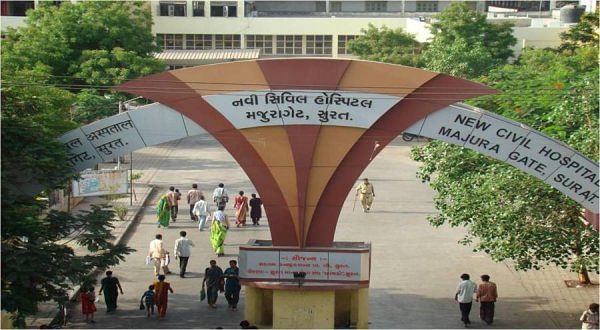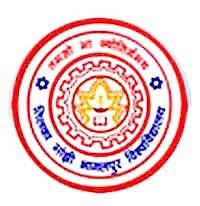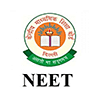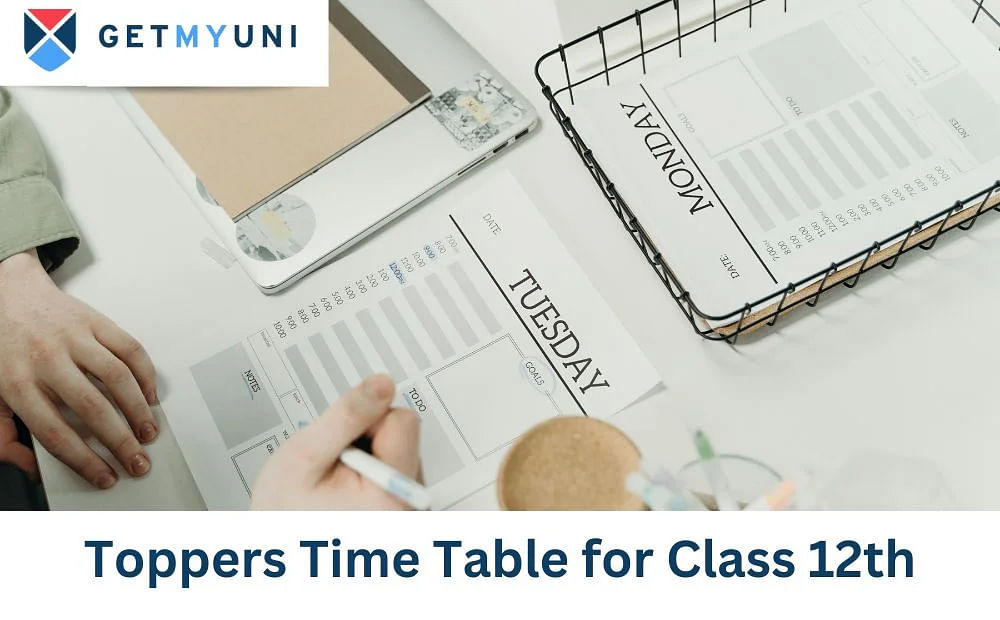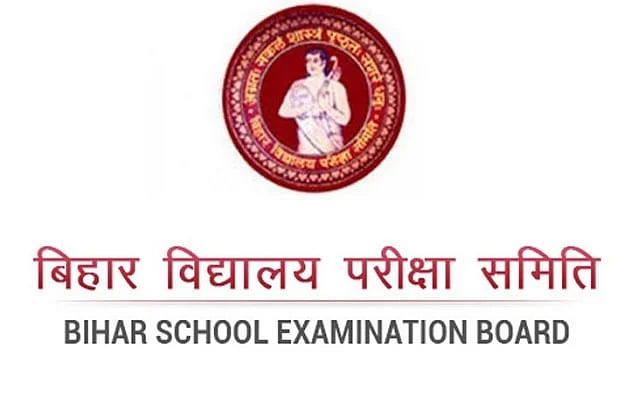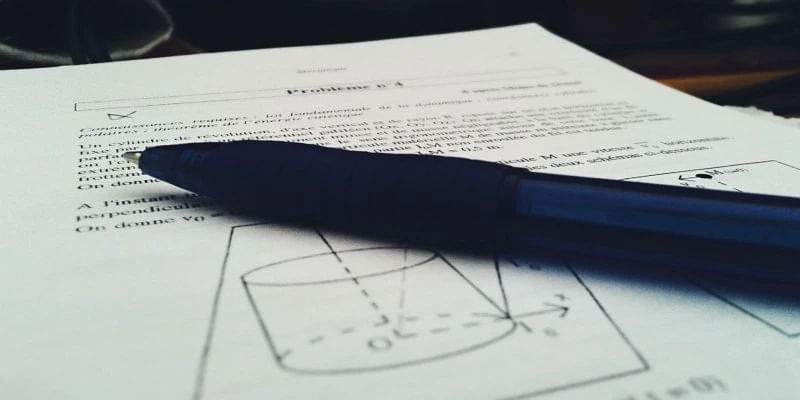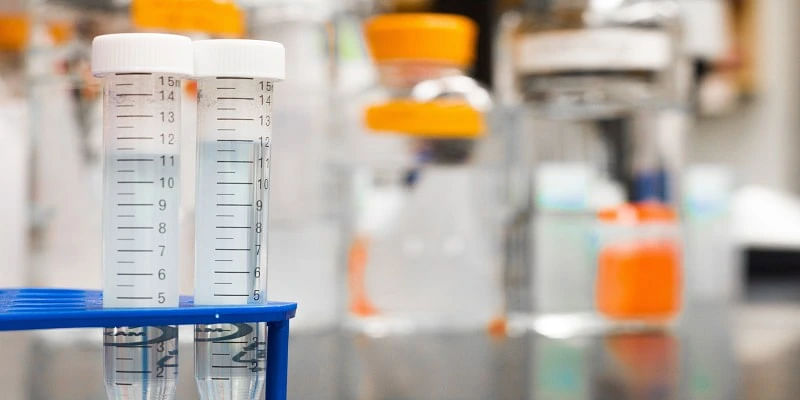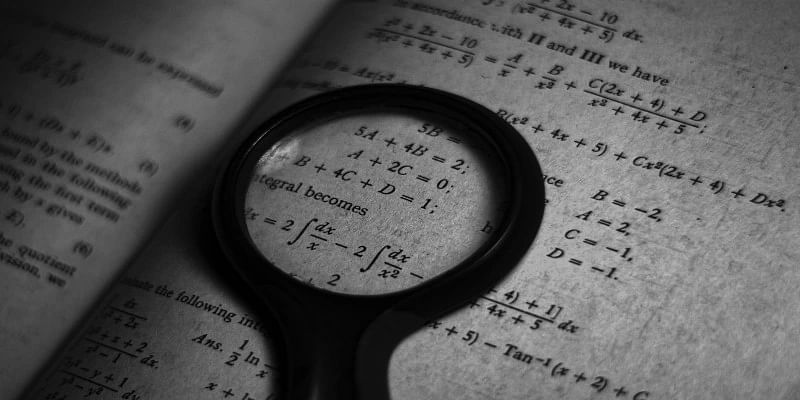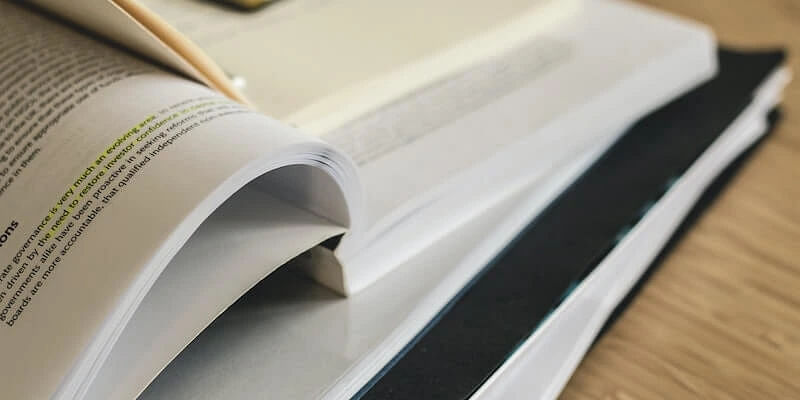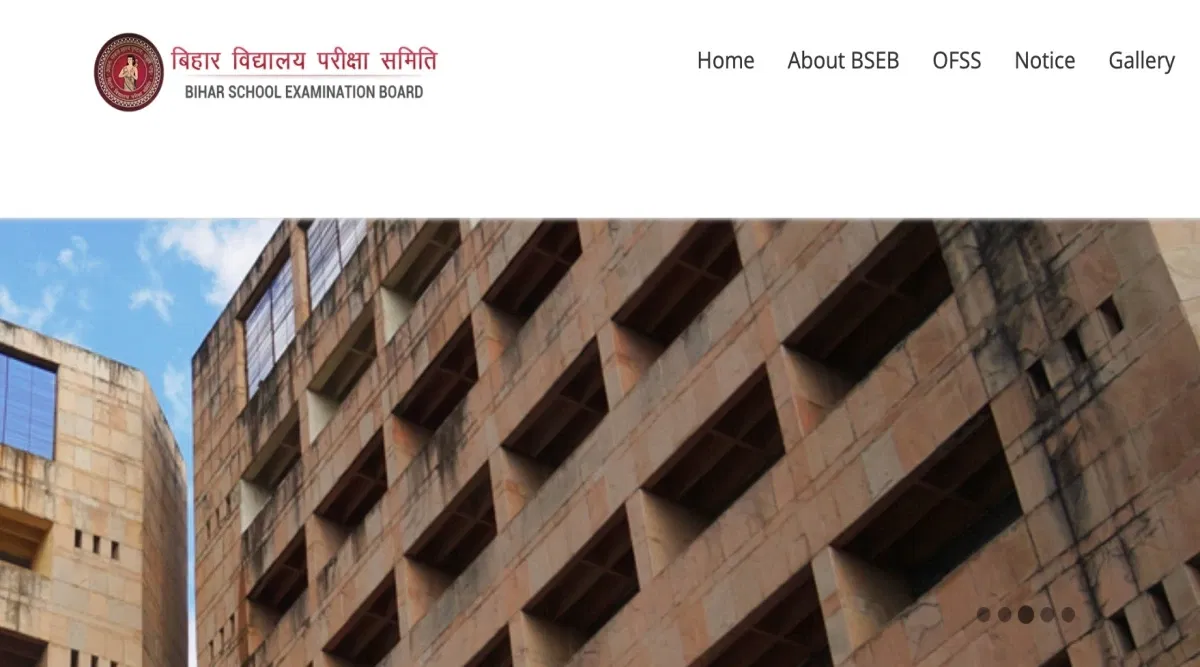BSEB Class 12 Syllabus 2025-26 Released: Download Latest and Revised BSEB Class 12th Syllabus PDF with Subject-wise
The BSEB Class 12 syllabus for 2025-26 is out for Arts, Science, and Commerce. It details subjects like English, Maths, Physics, and Accountancy. Students should download the official PDF from the board's site and check marking schemes for their 2026 exams.
Table of Contents
The Bihar Board 12th syllabus 2026 is standard across all three streams - Arts, Science, and Commerce. The syllabus includes a detailed curriculum for subjects such as English, Hindi, Maths, Physics, Chemistry, Economics, Accountancy, and many others.
The BSEB 12th syllabus 2025-26 PDF download link can be accessed on the board's official website, curated based on the recent curriculum. Students are required to cover all the topics to attempt all questions in the Bihar Board 12th exam 2026.
The BSEB board is responsible for issuing the Bihar Board 12th 2026 syllabus and the Bihar Board 12th exam pattern for the intermediate examination. Students should review the syllabus of class 12 Bihar board 2025-26, and check the chapter-wise marking scheme for each subject.
| Bihar Board 12th Time Table | Bihar Board 12th Model Papers |
| Bihar Board 12th Exam Pattern | Bihar Board 12th Exam Preparation |
Bihar Board 12th Syllabus 2026
The Bihar board syllabus class 12 2026 includes chapters and topics for all subjects under each stream. Candidates can review the syllabus of class 12 Bihar board 2026 thoroughly and check the topic allocation.
Students can also download the official blueprint from the board's website and prepare for the board exam accordingly. Students can refer to the Bihar Board syllabus class 12 for all subjects from the table below.
| Stream | Subjects | Details |
| Language-Based Subjects | English | Click Here |
| Hindi | Click Here | |
| Bihar Board 12th Syllabus 2026 Science | Biology | Click Here |
| Maths | Click Here | |
| Physics | Click Here | |
| Chemistry | Click Here | |
| Computer Science | Click Here | |
| Bihar Board Class 12 Syllabus 2025-26 Commerce | Economics | Click Here |
| Accountancy | Click Here | |
| Business Studies | Click Here | |
| Bihar Board Class 12 Syllabus 2025-26 Arts | History | Click Here |
| Sociology | Click Here | |
| Geography | Click Here |
BSEB 12th Stream-Wise Syllabus 2026
Bihar Board 12th 2026 syllabus consists of three major streams: Science, Commerce, and Arts. The three streams are classified based on the core subjects under the Bihar Board class 12 syllabus 2025-26.
- The Bihar Board class 12th syllabus 2026 science includes topics related to medicine, engineering, and other professional fields.
- The Bihar Board syllabus class 12 2026 PDF Commerce focuses on business-related topics, commerce, trade, and financial matters.
- Unlike Science and Commerce, the Bihar Board arts subject covers vast areas of study, and the subjects include languages like Political Science, Psychology, Sociology, and more.
The core subjects for each stream are added here for the Bihar board 12th students to check. The following sections cover the Bihar board 12th subject list for each stream.
| Stream | Major Subjects |
| Subjects - Bihar Board 12 Syllabus 2026 Science | Physics, Chemistry, Mathematics, Biology, English, Computer Science |
| Subjects - Bihar Board Commerce Syllabus 2026 | Accountancy, Business Studies, Economics, Mathematics, English |
| Subjects - Bihar Board Arts Syllabus 2026 | History, Geography, Political Science, English, Psychology, Sociology |
Bihar Board Class 12 Syllabus 2025-26 Science
The Bihar Board 12th syllabus 2026 science includes the curriculum for core subjects such as Physics, Chemistry, Mathematics, Biology, and Computer Science. English is a compulsory subject, and many other optional language subjects exist. Students can view the chapters and topics as per the Bihar Board syllabus 2026 class 12 science PDF from the given sections:
Bihar Board Class 12 Syllabus 2026 for Physics
Below mentioned are the 12th physics syllabus Bihar Board for the academic year 2025-2026. It will give the students an idea of the units, chapters, and subtopics.
| Unit Name | Marks | |
| 1 | Physical World and Measurement | 23 |
| Chapter 1: Physical World | ||
| Chapter 2: Units and Measurements | ||
| 2 | Kinematics | |
| Chapter 3: Motion in a Straight Line | ||
| Chapter 4: Motion in a Plane | ||
| 3 | Laws of Motion | |
| Chapter 5: Laws of Motion | ||
| 4 | Work, Energy, and Power | 17 |
| Chapter 6: Work, Energy and Power | ||
| 5 | Motion of System of Particles and Rigid Body | |
| Chapter 7: System of Particles and Rotational Motion | ||
| 6 | Gravitation | |
| Chapter 8: Gravitation | ||
| 7 | Properties of Bulk Matter | 20 |
| Chapter 9: Mechanical Properties of Solids | ||
| Chapter 10: Mechanical Properties of Fluids | ||
| Chapter 11: Thermal Properties of Matter | ||
| 8 | Thermodynamics | |
| Chapter 12: Thermodynamics | ||
| 9 | Behavior of Perfect Gases and Kinetic Theory of Gases | |
| Chapter 13: Kinetic Theory | ||
| 10 | Oscillations and Waves | 10 |
| Chapter 14: Oscillations | ||
| Chapter 15: Waves | ||
| Total | 70 | |
Bihar Board Class 12 Syllabus 2026 For Chemistry
Refer to the table below to learn about the Chemistry Bihar Board 12th syllabus 2026 PDF download:
| Unit | Title | Marks |
| 1 | Some Basic Concepts of Chemistry | 11 |
| 2 | Structure of Atoms | |
| 3 | Classification of Elements and Periodicity in Properties | 4 |
| 4 | Chemical Bonding and Molecular Structure | 21 |
| 5 | States of Matter: Gases and Liquids | |
| 6 | Chemical Thermodynamics | |
| 7 | Equilibrium | |
| 8 | Redox Reactions | 16 |
| 9 | Hydrogen | |
| 10 | s -Block Elements | |
| 11 | Some p-Block Elements | |
| 12 | Organic Chemistry: Some Basic Principles and Techniques | 18 |
| 13 | Hydrocarbons | |
| Total | 70 | |
Bihar Board Class 12 Syllabus 2026 for Biology
The Bihar Board 12th syllabus 2026 for the Biology subject consists of important chapters such as reproduction, genetics, evolution, etc. Refer to the table below to learn about the units and marks each unit carries in the Biology subject.
| Unit | Topics | Marks |
| 1 | Diversity in Living Organisms | 15 |
| 2 | Structural Organisation of Plants and Animals | 8 |
| 3 | Cell: Structure and Function | 15 |
| 4 | Plant Physiology | 15 |
| 5 | Human Physiology | 17 |
| Total | 70 | |
Bihar Board Class 12 Syllabus 2026 for Mathematics
Mentioned below are the class 12 syllabus 2026 Bihar Board for Maths:
| Unit | Unit Name | Marks |
| 1 | Relations and Functions | 08 |
| 2 | Algebra | 10 |
| 3 | Calculus | 35 |
| 4 | Vectors and Three–Dimensional Geometry | 14 |
| 5 | Linear Programming | 05 |
| 6 | Probability | 08 |
| Total | 80 | |
| Internal Assessment | 20 | |
Must Check:
| Bihar Board 12th Mathematics Syllabus 2026 | Bihar Board 12th Physics Syllabus 2026 |
| Bihar Board 12th Biology Syllabus 2026 | Bihar Board 12th Chemistry Syllabus 2026 |
Bihar Board Class 12 2026 Syllabus for Commerce
The Commerce stream is a study of trade and business activities such as the exchange of goods and services from the producer to the final consumer. Economics, Business Studies, and Mathematics are the core subjects under the Bihar board Commerce subject list.
The following is the class 12 syllabus Bihar Board 2026 for the Commerce stream.
Bihar Board Class 12 Syllabus for Accountancy
Accountancy class 12 Bihar board syllabus 2026 consists of all the founding principles of accounting and its real-time applications. The table below consists of unit names and marks for the Accountancy subject.
| Unit | Unit Name | Marks |
| Part A | Accounting for Not-for-Profit Organizations, Partnership Firms and Companies | |
| Unit 1. Financial Statements of Not-for-Profit Organizations | 10 | |
| Unit 2. Accounting for Partnership Firms | 30 | |
| Unit 3. Accounting for Companies | 20 | |
| Total | 60 | |
| Part B | Financial Statement Analysis | |
| Unit 4. Analysis of Financial Statements | 12 | |
| Unit 5. Cash Flow Statement | 8 | |
| Total | 20 | |
| Part C | Project Work | 20 |
| Project work will include: Project File | 4 MarksWritten Test | 12 Marks (One Hour)Viva Voce | 4 Marks | ||
| OR | ||
| Part B | Computerized Accounting | |
| Unit 4. Computerized Accounting | 20 | |
| Part C | Practical Work | 20 |
| Practical work will include: Practical File 4 MarksPractical Examination 12 Marks (One Hour)Viva Voce 4 Marks | ||
Bihar Board Class 12 Syllabus 2026 for Economics
Mentioned below are the details for the Bihar Board 12th syllabus 2026 for economics, which is divided into two units: Macroeconomics and Microeconomics.
| Units | Unit Name | Marks |
| Part A | Introductory Macroeconomics | |
| National Income and Related Aggregates | 10 | |
| Money and Banking | 6 | |
| Determination of Income and Employment | 12 | |
| Government Budget and the Economy | 6 | |
| Balance of Payments | 6 | |
| Total | 40 | |
| Part B | Indian Economic Development | |
| Development Experience (1947-90) and Economic Reforms since 1991 | 12 | |
| Current Challenges Facing the Indian Economy | 22 | |
| Development Experience of India – A Comparison with Neighbours | 06 | |
| Theory Paper (40+40 = 80 Marks) | 40 | |
| Part C | Project Work | 20 |
Bihar Board Class 12 Syllabus 2026 for Business Studies
The Business Studies subject provides strategies and scientific approaches in business fields. Mentioned below are the details of the Bihar Board class 12 Business Studies syllabus 2026:
| Unit | Unit Name | Marks |
| Part A | Principles and Functions of Management | |
| 1. | Nature and Significance of Management | 16 |
| 2. | Principles of Management | |
| 3. | Business Environment | |
| 4. | Planning | 14 |
| 5. | Organising | |
| 6. | Staffing | 20 |
| 7. | Directing | |
| 8. | Controlling | |
| Total | 50 | |
| Part B | Business Finance and Marketing | |
| 9. | Financial Management | 15 |
| 10. | Financial Markets | |
| 11. | Marketing Management | 15 |
| 12. | Consumer Protection | |
| Total | 30 | |
| Part C | Project Work (One) | 20 |
Bihar Board 12th Syllabus 2026 for Arts
Humanities/Arts is a vast stream compared to the other two. The BSEB Arts subject list contains subjects such as History, Political Science, Sociology, Psychology, and more. The following section contains a detailed classification of the major subjects in the Humanities/Arts stream under the class 12th syllabus 2026 BSEB Board.
Bihar Board Class 12 Syllabus 2026 for History
The total marks for the Bihar board 12th History exam are 80 for theory and 20 for internal assessment. Mentioned below is the Bihar Board Class 12 History Syllabus 2026:
| Units | Marks |
| Themes in Indian History Part - I (Units 1 – 4) | 24 |
| Unit 1: The Story of the First Cities: Harappan Archaeology | |
| Unit 2: Political and Economic History: How Inscriptions tell a story | |
| Unit 3: Social Histories: using the Mahabharata | |
| Unit 4: A History of Buddhism: Sanchi Stupa | |
| Themes in Indian History Part-II (Units 5 – 9) | 25 |
| Unit 5: Medieval Society through Travellers’ Accounts | |
| Unit 6: Religious Histories: The Bhakti-Sufi Tradition | |
| Unit7: New Architecture: Hampi | |
| Unit 8: Agrarian Relations: The Ain-i-Akbari | |
| Unit 9: The Mughal Court: Reconstructing Histories through Chronicles | |
| Themes in Indian History Part-III (Units 10 – 15) | 25 |
| Unit 10: Colonialism and Rural Society: Evidence from Official Reports | |
| Unit 11: Representations of 1857 | |
| Unit 12: Colonialism and Indian Towns: Town Plans and Municipal Reports | |
| Unit 13: Mahatma Gandhi Through Contemporary Eyes | |
| Unit 14: Partition through Oral Sources | |
| Unit 15: The Making of the Constitution | |
| Map Work | 06 |
| Total | 80 |
| Project work (Internal Assessment) | 20 |
| Total | 100 |
Bihar Board Class 12 Syllabus 2026 for Geography
The Geography subject under class 12 syllabus BSEB Board 2026 is the advanced version of class 11th Geography. The Geography subject holds 80 marks out of 100 for the theory and 20 marks for internal.
Refer to the table below to know the Bihar Board 12th Syllabus 2026 for Geography:
| Unit | Chapter | Marks |
| Part A | Fundamentals of Human Geography | 35 |
| Unit 1 | Human Geography | 30 |
| Unit 2 | People | |
| Unit 3 | Human Activities | |
| Unit 4 | Human settlements | |
| Map Work | 5 | |
| Part B | India: People and Economy | 35 |
| Unit 1 | People | 30 |
| Unit 2 | Human Settlements | |
| Unit 3 | Resources and Development | |
| Unit 5 | Geographical Perspective on selected issues and problems | |
| Map Work | 5 | |
| Part C | Practical Work | 30 |
| Unit 1 | Processing of Data and Thematic Mapping | 25 |
| Unit 3 | Practical Record Book and Viva Voce | 5 |
Bihar Board Class 12 Syllabus 2026 for Political Science
Refer to the table below to learn the revised mark distribution and topics which are included according to the updated Bihar Board 12th Political Science syllabus 2026.
| Unit | Contents | Marks |
| Part A: Contemporary World Politics | ||
| 1 | Cold War Era and Non–aligned Movement | 6 |
| 2 | The End of Bipolarity | 8 |
| 3 | New Centres of Power | 8 |
| 4 | South Asia and the Contemporary World | 6 |
| 5 | United Nations and its Organizations | 6 |
| 6 | Globalization | 4 |
| Total | 40 | |
| Part B: Politics in India Since Independence | ||
| 7 | Challenges of Nation-Building | 8 |
| 8 | Planned Development | 4 |
| 9 | India's Foreign Policy | 4 |
| 10 | Parties and the Party Systems in India | 8 |
| 11 | Democratic Resurgence | 8 |
| 12 | Indian Politics: Trends and Developments | 8 |
| Total | 40 | |
Bihar Board Class 12 Syllabus 2026 for Sociology
The theory mark for the Bihar board 12th Sociology is 80, and the internal exam holds 20 marks. Refer to the table below to learn about the Bihar Board 12th 2026 syllabus for Sociology:
| Units | Marks |
| Part A - Indian Society | |
| Unit 1: Introducing Indian Society | Non - Evaluative |
| Unit 2: The Demographic Structure of Indian Society | 10 |
| Unit 3: Social Institutions: Continuity and Change | 10 |
| Unit 5: Patterns of Social Inequality and Exclusion | 10 |
| Unit 6: The Challenges of Cultural Diversity | 10 |
| Unit 7:Suggestions for Project Work | Non- Evaluative |
| Total | 40 |
| Part B - Social Change and Development in India | |
| Unit 8: Structural Change | 5 |
| Unit 9: Cultural Change | 5 |
| Unit11: Change and Development in Rural Society | 10 |
| Unit 12: Change and Development in Industrial Society | 10 |
| Unit 15: Social Movements | 10 |
| Total | 40 |
Bihar Board Class 12 Syllabus 2026 for English
English is a compulsory subject for all the streams of Bihar board class 12. All topics from the class 12 English syllabus Bihar Board 2024 must be noted and studied well.
| Sections | Topics | Marks |
| Reading Comprehension | Conceptual understanding, decoding, analysing, inferring, interpreting, appreciating, literary conventions and vocabulary, summarising and using appropriate format/s | 20 |
| Creative Writing Skills | Conceptual Understanding, application of rules, Analysis, Reasoning, appropriacy of style, and tone, using appropriate format and fluency, inference, analysis, evaluation, and creativity | 16 |
| Literature Textbooks and Supplementary Reading Text | Recalling, reasoning, appreciating literary convention, inference, analysis, and creativity with fluency | 44 |
| Total | 80 | |
| Assessment of Listening and Speaking Skills | - | 20 |
| Total | 100 | |
Exam Pattern Under Bihar Board Class 12 Syllabus 2026
The exam pattern for the Bihar Board 12th follows the Bihar Board 12th syllabus 2026. The following is the exam pattern of the Bihar Board 12th exam.
- Candidates will be asked MCQ, short answer, and long answer questions.
- The total marks for long answer and objective questions will be allocated the same marks throughout the paper.
- There is no negative marking
- The time allotted for the exam is 3 Hours and 15 minutes.
- The total marks of the exam for all subjects are 100, under which 70 marks are allotted for the theory exam and 20 marks are set for practical assessments.
Read More: Bihar Board 12th Exam Pattern 2026
FAQs on BSEB 12th Syllabus
Q: What are the major streams included in the Bihar Board 12th Syllabus 2025-26 for the BSEB 12th exam?
Q: What are the full marks allotted in Bihar Board 12th 2025-26 Syllabus for the Science stream?
Q: How many marks are assigned for the project/internal assessment as per the class Bihar Board class 12 Syllabus 2025-26?
Q: What are the qualifying marks for the Bihar Board 12th exam as mentioned in the latest Bihar Board 12th Syllabus 2025-26?
Q: From where can I download the BSEB class 12 Syllabus 2025-26 in pdf format?







